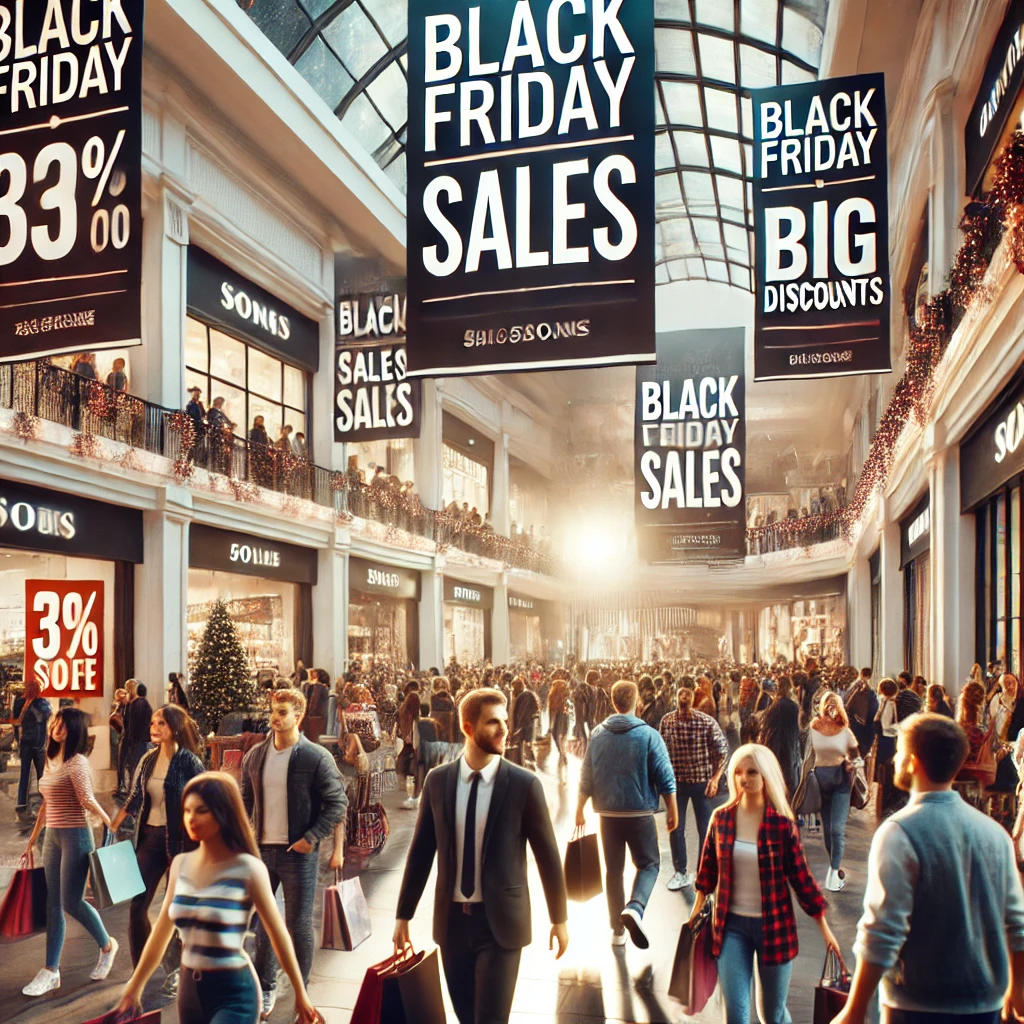Since Facebook rebranded itself as Meta, discussions on what the Metaverse IS have been heated & trending.
Recently, an NFT-based metaverse real estate company named Metaverse Group bought a parcel of land on a virtual real estate platform known as Decentraland for USD 2.43 million. It was the highest ever amount spent so far on virtual real estate.
Every week, it seems another company is trying to pave their footprint in the Metaverse, scrambling to figure out how to make money in this next digital frontier. In December, Walmart filed several new trademarks showing intent to make and sell virtual electronics, toys, sporting goods, and many other items. Then, Ralph Lauren’s CEO said the Metaverse is the way to attract younger shoppers that are a high spending audience. Nike, Gap, Puma and Urban Outfitters are just some of the other companies looking to become forerunners in this virtual landscape.
Convinced yet? No? Keep reading.
Metaverse has suddenly become a hot trending topic, even though the concept has been there for close to three decades. 10 years ago SECOND LIFE was all the RAGE.

Ultimately, SECOND LIFE failed because we didn’t have the concepts of BLOCKCHAIN, BITCOIN, NFTs and DECENTRALISED AUTONOMOUS ORGANISATIONS (DAO).
Fast forward 10 years, and it’s clear to see, the metaverse and web 3.0 have reached a perfect storm of tech, consumer readiness and currency facilitation.
But, the answer to “what is the metaverse?” is not as simple. This is because there is no “fully baked” metaverse for now, and no one knows what it will be in the future.
EXPLAINING THE METAVERSE
Unlike many things, the Metaverse is difficult to explain for a reason: it doesn’t necessarily exist. It’s somewhat a dream for the future of the internet and might be a clean way to cover some current trends in online realm infrastructure, including the growth of real-time 3D worlds, VR and more.
But here is the fun part.
Will you be checking your Facebook/Insta feed in Fortnite with a pair of AR glasses? OR Are your friends tech-savvy enough to invite you to cyber-brunch in the Metaverse instead of regular brunch? (sounds nutritious?!?!).
Time to jump in and figure it out.
DEFINITION OF THE METAVERSE
The most commonly quoted definitions that experts make include:
Matthew Ball
venture capitalist & author of the extensive Metaverse Primer
“The Metaverse is an expansive network of persistent, real-time rendered 3D worlds and simulations that support continuity of identity, objects, history, payments, and entitlements, and can be experienced synchronously by an effectively unlimited number of users, each with an individual sense of presence.”
Facebook (Meta), has the most significant stake in the Metaverse, loves to describe it more simply:
“The ‘metaverse’ is a set of virtual spaces where you can create and explore with other people who aren’t in the same physical space as you.”
What is Facebook’s idea of the Metaverse?
Facebook’s idea of the Metaverse is replacing Social Media with meta that includes virtual avatars of people—socialising, playing games, holding meetings, having concerts, attending workshops, exercising & studying.
Basically, all activities that exist in reality.
A bigger picture of the Metaverse can be extrapolated from this idea. But it’s noteworthy that Zuckerberg also believes it could take around five years for the Metaverse to become mainstream & fetch some significant returns. Put in context, that’s a short time.
OTHER PLAYERS IN THIS FIELD
Microsoft is another major player trying to build the Metaverse. They call their idea Mesh. One of the most exciting features is what the company calls “Holoportation”. Simply put, this will enable users to project their holographic selves to other users.
Its virtual and augmented realities can be experienced best with HoloLens devices — a gadget that can make the ‘Holoportation’ experience altogether different. However, you can also access Mesh via VR headsets, mobile phones, tablets or PCs.
Microsoft Mesh
Focused on changing the whole work culture taking there tools teams on Metaverse.
Other more advanced platforms include Roblox and Fortnite. The former is particularly interesting.
Launched in 2006, Roblox is now so famous that over 50% of American children under 16 played it in 2020, & yes, it is more than just a game.
For comparison’s sake, just imagine a fair where stalls allow visitors to play games. Roblox is a huge fair in the virtual world. Here users can create their games in the fair and even can monetise them to earn real money by exchanging the virtual Roblox currency known as Robux that they earn on the forum/platform.
The Metaverse has been with us for a while now. The technology used has also been used for almost a decade now. The most significant revolution is that big companies are moving into structuring themselves as metaverse companies.
Here’s not just a possibility but a probable scenario of what we’re talking about: It’s 2026, and you’re just about to go on a first date with a guy/girl you met on Meta Planet Theta, a virtual reality (VR) dating platform (a better tinder) set to launch this year. You strap on a VR headset or glasses—perhaps one made by Meta Platforms, formerly known as Facebook—and since you want to make the best possible first impression, you dress your avatar in a Louis Vuitton suit and pair of Prada non-fungible token (NFT) sunglasses that you purchased with the Ether (CryptoCurrency). After spending time strolling through an enchanted forest or a beach, you and your date watch the latest Disney movie, projected against the wall of a magical castle.
OUR FINDINGS & PREDICTIONS
Here are our few findings & structural predictions about the Metaverse:
- There is just one Metaverse. There are not multiple “metaverses.” Fortnite and Roblox are not competing metaverses, but rather these are “virtual worlds” or “games” that will, one day, exist within a larger & joined meta verse. We have to use “Metaverse” just as we use “Internet.”
- The Metaverse is for anyone/everyone. By definition, the Metaverse is always exists in our minds and is global. Due to that, it must be broadly usable and decipherable. It should not be too costly to use nor too niche.
- Nobody controls the Metaverse. Yes, corporations are and will try to control the Meta verse. We believe they are doomed to fail since they will not be able to fulfil every possible use case and outcome. Decentralisation will allow creators to reject attempts at monopoly.
- The Metaverse is open. It will surely be built on public standards and norms, as with internet products and services. New standards or countrywide constitutions may need to be created to accommodate more 3D-first environments.
- The Metaverse is hardware-independent. Though most of the content in the Metaverse will be consumed in 3D form, immersion is not always necessary. We expect 3D “virtual products/services” to be accessible even from 2D displays.
- The Metaverse is a network. Rather than a single program or code, the Metaverse is a vast & extraordinary network of information that can be easily traversed and engaged. Users can communicate, transact, and consume in this plane.
- The Metaverse is the Internet. In time, we believe the internet will evolve into the Metaverse. However, the animating trait is less about digital value overtaking physical value (though surely digital life will become richer) but about new experiences and technologies enabled by the internet’s open, collaborative approach.
WHY SHIFT TO THE METAVERSE NOW?
“The creation of metaverses will catalyse the development of blockchain systems oriented towards decentralised governance, decentralised finance and smart contracts in general”, thinks Roman Nekrasov, a serial IT entrepreneur from Russia and co-founder of the ENCRY Foundation.
It’s only in the last few years that the Metaverse has gained mainstream momentum. Epic Games announced a staggering $1 billion in investment to build the Metaverse back in April 2021.
Facebook followed soon after with its rebrand to Meta, and a billion-dollar pivot towards its metaverse platform, & other companies aren’t far behind.
Niantic, the developer of Pokémon Go, have announced they will use a fresh flush of $300 million investment to develop metaverse-like experiences.
Kucoin Labs has a new $100 million metaverse fund, and Morgan Stanley mentioned it as the following big investment scheme in an investor’s note.
The examples are endless and suffice to say, the industry is hugely bullish on the Metaverse. The technology advancements of the last decade – blockchain, crypto, interoperability, and affordable VR – means that Neal Stephenson’s dream of the Metaverse is close to becoming a reality.
As per Wall street, “Metaverse trends to become a trillion-dollar industry in next five years”
In an end-of-the-year blog post, Bill Gates says he believes that in the next “two or three years”, most virtual meetings will move from two-dimensional, Zoom-style interfaces to the Metaverse. “There’s still some work to do, but we’re approaching a threshold where the technology begins to truly replicate the experience of being together in the office,” Gates writes. He adds that Microsoft, whose board Gates stepped down from in May, is set to release its own “interim” VR tools next year in conjunction with its planned virtual workspace, Mesh for Microsoft Teams.
CRYPTO AND THE METAVERSE
While metaverses are still in the early stages of development, many businesses are already dabbling in the digital realm. The Metaverse presents a massive opportunity for crypto. It can change how people socialise, watch performances, interact with brands, learn, and trade digital assets. Crypto is becoming more mainstream in utility and adoption as it becomes the Metaverse’s medium of exchange.
Louis Vuitton, Gucci, Burberry, Adidas, Nike are heralding a world where digital fashion will be as dynamic as physical fashion. But it’s not just about having access to high-end fashion. Walmart is looking to sell NFTs and its own cryptocurrency to investors soon, putting convenience right up there with luxury.
Non Fungable Tokens are how to buy things in the Metaverse. The NFTs are digital certificates that prove ownership of property, digital and analog. If Ether, Bitcoin and other cryptos are the money of the Metaverse, then NFTs represent the stuff that fills up the Metaverse. So basically, you are using crypto to buy NFTs. NFTs are already high in demand, with new entrants arriving every day. This year alone, NFT trading volume is estimated to surpass $24 billion, up massively from only $0.1 billion last year, according to DappRadar.
IMPACT ON ADVERTISING/ MARKETING
One of the biggest metaverse use cases would be the possibility of unlocking new marketing opportunities. You get various virtual worlds in the Metaverse, such as Sandbox and Decentraland. Users participate in different activities as their digital avatars. Metaverse users can shop or socialise and participate in leisure or learning activities.
Many brands are successfully capitalising on these opportunities in the Metaverse. For example, Anzu has employed ads for tracking real-time views in gaming environments throughout mobile and console platforms. Also, Roblox has started placing such ads for brands such as Paramount+ and WarnerMedia. The ads in the Metaverse resemble real life and mix well into the gameplay, where you can find the ads at the right places. For example, billboard ads in the game or branded clothing worn by characters in the games offer promising brand exposure. The use cases of Metaverse for unlocking new marketing opportunities have become clearly evident in metaverse games.
There are two ways to look at the metaverse opportunity for advertising. First, it is an additional channel in your marketing mix, just like you have a branded mobile app, banner ad on Google Display Network, an analytics-enabled website, and social media presence (both organic and sponsored). The Metaverse, too, will have its own unique ad formats that come with full marketing attribution so advertisers can track traffic and invest intelligently.
Second, the Metaverse can be viewed as a new medium for storytelling. Apart from traditional ads like those that pop up on Google, Facebook, LinkedIn, etc., you can have immersive ad experiences that tell the brand story.
Interestingly, this isn’t a new concept. Since the rise and gradual mass adoption of VR headsets, brands have invested in sophisticated 360-degree videos for specific ad campaigns.
KEY CHALLENGES
While companies have done ads with VR advertising before, the Metaverse is a whole new game. It aims for interoperability at an unprecedented scale and can engage users for prolonged periods.
Also, its decentralised architecture, new mechanisms of interfacing, and crypto-based economy present further challenges.
At least in the early years of the Metaverse, advertisers could struggle with the following:
- Fading branding boundaries – Since the Metaverse is decentralised, companies may not exert control over ad spots. You may find an influencer supporting items from two competing companies simultaneously.
- Real world product replication – Prospective customers can engage in hyper-customisation in VR. But when brands fail to deliver a similar experience in the real world, product engagement could fall.
- Too much content – Continuous video pop-ups, indistinguishable sponsored content, and repetitive ads are all too common in the digital world. Inside the Metaverse, they may take on an even more intrusive dimension and cause sensory overload.
- Data privacy and ethical issues – In the Metaverse, brands can see a version of your identity in the form of a 3D avatar. But does the avatar denote explicit consent? Can advertisers, therefore, target ads based on someone’s appearance in VR? These issues are yet to be explored.
ADVERTISING FORMATS IN THE METAVERSE
The industry is primarily bullish about advertising opportunities in VR due to the promising possibilities that it enables. Brands will be able to gain from:
VR BILLBOARDS
For now advertising in the Metaverse will mainly comprise of virtual reality billboards that are easy to design and insert into existing app experiences.
For example, when you are in an MS Teams “Mesh” VR workspace, you might be able to look outside the window and see a billboard depicting your favourite snack brand.
SPONSORED CONTENT IN MAJOR SPACES
From VR Billboards, the transition will be to sponsored content. Our social media feed has a mix of organic and sponsored content, which will be the same in Virtual spaces meant for multi-party interactions. Instead of consuming content alone, you can share ad experiences with your peer network.
PRODUCT PLACEMENT IN METAVERSE GAMES
Product placement is inevitable as more VR games are built for the Metaverse. This is implemented to a great extent in Pokémon Go, where sponsored locations pop up to invite footfall, using the game’s AR creatures as a lure.
Branded elements could be a subtle but noticeable overlay on top of game surroundings.
A CLASS OF GEN META OF INFLUENCERS
The Metaverse could feature a fascinating new technology called digital humans, essentially AI-powered humanoid bots in 3D. In the future, brands could design their very own influencers from scratch and transform how influencer marketing pushes a product.
These would do much more than the often hilarious NPCs (non player characters) found in games like Elder Scrolls.
IMMERSIVE NATIVE AD EXPERIENCES
Finally, native VR advertising holds the most promise for marketers in the Metaverse. Brands can create full-scale experiences that weave a story, allow users to interact with their product, and eventually make a purchase online without leaving the Metaverse. Imagine trying on a virtual Tissot watch, pivoting your wrist 90 degrees, smiling at the result, and then purchasing via an ecommerce transaction and receiving it in the physical world the next day.
CONCLUSION
The contemporary world has already tasted what will be on the digital table for the future. Virtual reality (and its worlds) is a fascinating concept that makes heads turn and make us think about the question, “What if there was a world other than the real one?”
The isolation of lockdowns caused by the pandemic have made us familiar with a reliance on Metaverse like technology. Even so, most humans fear a dystopian era that is set to arrive.
An era of no physical contact, virtual connections, and the virtual economy, which will take away the sweet taste of social harmony & connection in the real world.
Our best advise for those looking to make money and enjoy the metaverse is: go early, go hard, but look after your kids and keep everything in moderation.
Don’t listen to so called METAVERSE experts, create a guest decentraland account and start exploring. Let us know when you arrive. The nimbull team would love to meet you there. We are the ones making it rain dollar bills!
Need help with Metaverse training for your marketing, IT and operations team?
Contact nimbull today!




